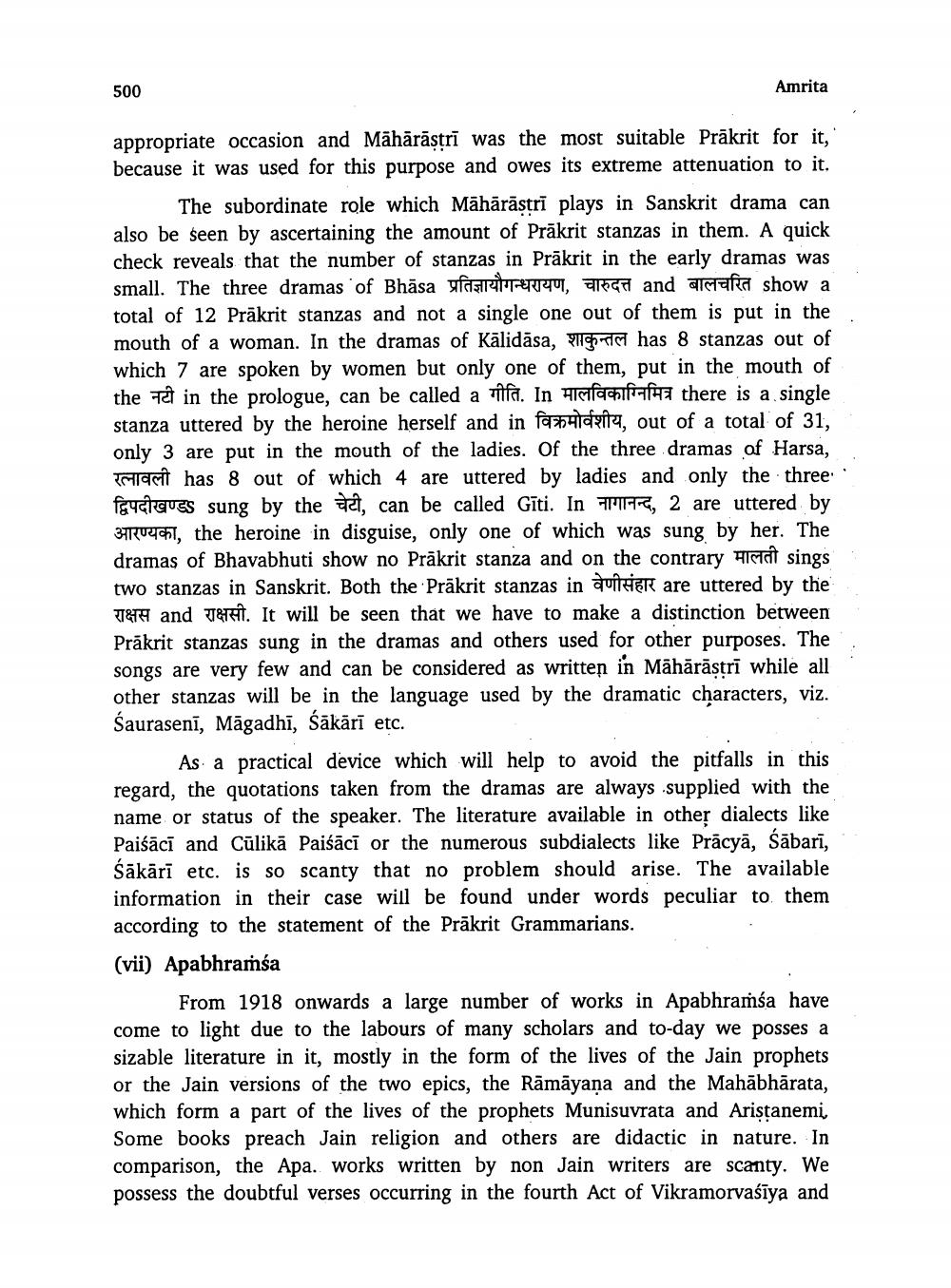________________
500
Amrita
appropriate occasion and Māhārāstrī was the most suitable Prākrit for it, because it was used for this purpose and owes its extreme attenuation to it.
The subordinate role which Māhārāstrī plays in Sanskrit drama can also be seen by ascertaining the amount of Prākrit stanzas in them. A quick check reveals that the number of stanzas in Prākrit in the early dramas was small. The three dramas of Bhasa प्रतिज्ञायौगन्धरायण, चारुदत्त and बालचरित show a total of 12 Prākrit stanzas and not a single one out of them is put in the mouth of a woman. In the dramas of Kālidāsa, pligorie has 8 stanzas out of which 7 are spoken by women but only one of them, put in the mouth of the tê in the prologue, can be called a filfa. In factors there is a single stanza uttered by the heroine herself and in fac ity, out of a total of 31, only 3 are put in the mouth of the ladies. Of the three dramas of Harsa, Hat has 8 out of which 4 are uttered by ladies and only the three faucieuss sung by the all, can be called Gīti. In MER, 2 are uttered by 37104 Ch, the heroine in disguise, only one of which was sung by her. The dramas of Bhavabhuti show no Prākrit stanza and on the contrary Hicidit sings two stanzas in Sanskrit. Both the Prākrit stanzas in a er are uttered by the राक्षस and राक्षसी. It will be seen that we have to make a distinction between Prākrit stanzas sung in the dramas and others used for other purposes. The songs are very few and can be considered as written in Māhārāstrī while all other stanzas will be in the language used by the dramatic characters, viz. Saurasenī, Māgadhi, Sākārī etc.
As a practical device which will help to avoid the pitfalls in this regard, the quotations taken from the dramas are always supplied with the name or status of the speaker. The literature available in other dialects like Paiśācī and Cūlikā Paiśācī or the numerous subdialects like Prācyā, sābarī, Śākārī etc. is so scanty that no problem should arise. The available information in their case will be found under words peculiar to them according to the statement of the Prākrit Grammarians. (vii) Apabhramsa
From 1918 onwards a large number of works in Apabhramśa have come to light due to the labours of many scholars and to-day we posses a sizable literature in it, mostly in the form of the lives of the Jain prophets or the Jain versions of the two epics, the Rāmāyana and the Mahābhārata, which form a part of the lives of the prophets Munisuvrata and Aristanemi, Some books preach Jain religion and others are didactic in nature. In comparison, the Apa. works written by non Jain writers are scanty. We possess the doubtful verses occurring in the fourth Act of Vikramorvašīya and




